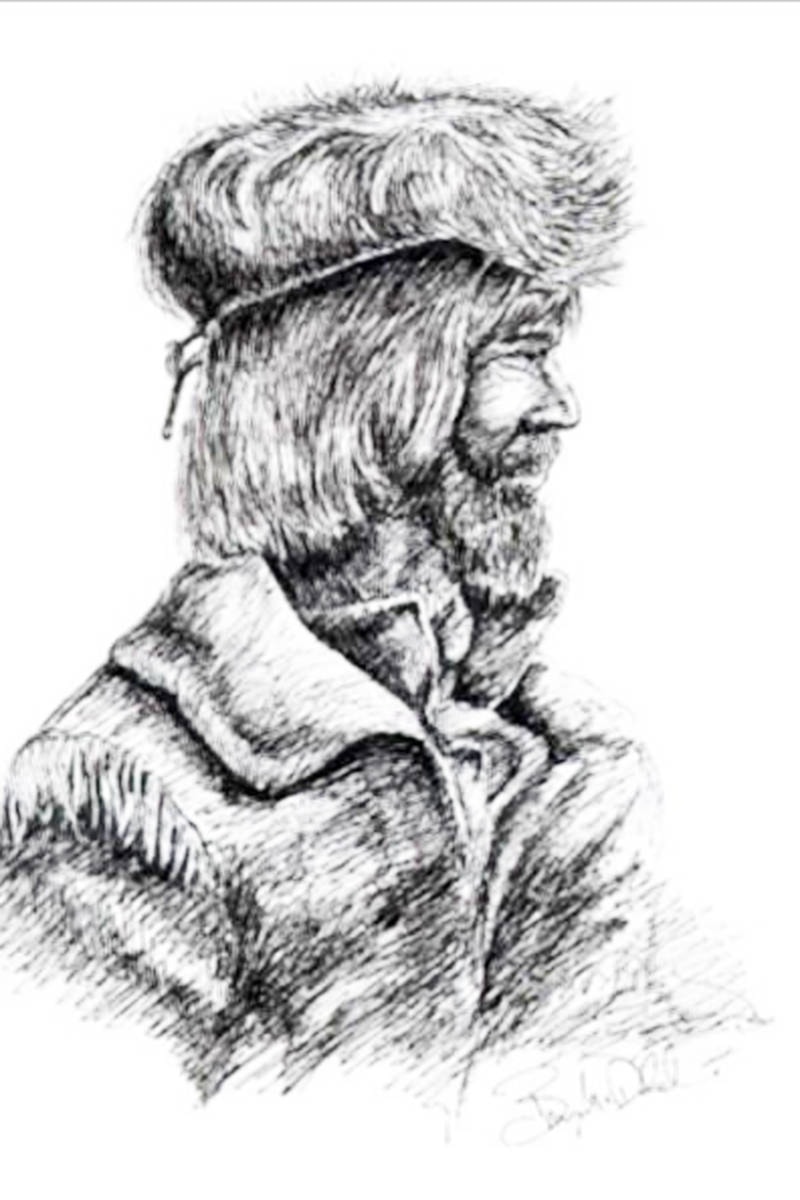The following is an excerpt from North River: The Story of BC’s North Thompson Valley and Yellowhead Highway 5 by Muriel Poulton Dunford.
A famous explorer’s geographical error lies behind the name of our river. In 1805, Simon Fraser, a partner in the North West Company headquartered in Montreal, was given charge of all its fur trade west of the Rocky Mountains.
It was he who named the Thompson River.
In 1808, Simon Fraser battled his way down the wild river, which in 1973, Alexander Mackenzie had assumed to be the Columbia. On the way, Fraser found a large tributary entering from the east.
Here he found Natives who owned horses—the first seen west of the Rockies. He later saw some European articles that he thought must have come through the Rockies.
Concluding that this stream was one that his Nor’ Wester friend, David Thompson, had penetrated on the eastern side of the Mountains, he called it “Thompson’s River.”
Day after brutal day, scaling canyon walls on ladders the Natives had made of poles and branches, Fraser struggled on to the coast. There his party faced further danger from the hostile Musqueams. Finally, more than a month after starting on this expedition, his calculations proved that the river he had risked his life to follow was not the Columbia.
At the time, David Thompson was actually exploring the Columbia’s headwaters. Then, racing to establish a post at its mouth, he arrived to find American traders already there. Having sailed in from the Pacific, they were building Fort Astoria for John Jacob Astor, the German emigrant who founded a family empire on furs. Ultimately, however, the great and lasting achievement was David Thompson’s, for he mapped the length of the Columbia River.
While he was the first white man to chart two major passes through the Rockies, Thompson never did see the river that bears his name. Five years later he nicely balanced the account with his associate, when he named the Fraser River for the Nor’ Weser who had first followed its fearful course to the sea.
We who live along the Thompson River can be glad that it honours David Thompson. A poor welsh boy of fourteen, he left London to join the fur trade in British North America. At the age nineteen, while laid up for the winter with a broken leg, he learned the science of surveying and cartography.
newsroom@clearwatertimes.com
Like us on Facebook and follow us on Twitter
Thereafter, he never travelled on company business without his sextent, compass, and bible. To the Natives he was the “Star-gazer.” By canoe, horseback, and foot, his meticulous exploration of more than 50, 000 miles of uncharted country produced the first comprehensive mapping of all western Canada.
Thompson’s accuracy was far ahead of its time; contemporary mapping of the western regions tended to “hit and miss.” The government later commissioned him to survey much of the 49th parallel for the international border in eastern North America.
Along with his vast accomplishment, Thompson maintained high principles in a world of rough living and lax morals. It was common for the fur traders to offer “fire water,” so the Natives would become addicted and easy to swindle.
Thompson refused to be party to commerce based on debauchery, and was known to have accidents with kegs of rum sent along on his expeditions. Often company men took “country wives,” but abandoned them and their children up returning to civilization. David Thompson remained faithful to his Irish-Indian wife and their family of thirteen for his whole life.
He was denied a pension after many years of highly skilled service. Poverty and blindness blighted his old age. When he died in 1857 his scientific journal had been forgotten, along with his huge map of what is now western Canada. One a scale of fifteen miles to the inch it had been important to the company, by then the fur trade was on the way out. Only when the legacies of his work were discovered long afterwards was their true value appreciated. Fortunately, Simon Fraser had already ensured lasting honour for one of the greatest map-makers ever known when he named the Thompson River.
